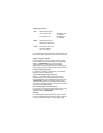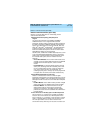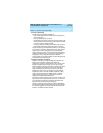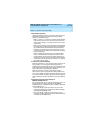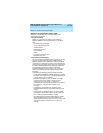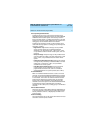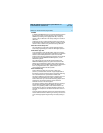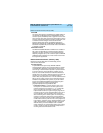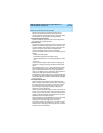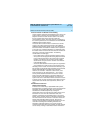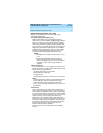
MERLIN LEGEND Communications System Release 7.0
Pocket Reference
555-670-116
Issue 1
April 1999
4
Release 6.1 Enhancements (August 1998)
Release 6.1 Enhancements (August 1998)
Release 6.1 includes all Release 6.0 functionality plus the
enhancements listed below.
■ Private Networking
Release 6.1 enhances the functioning of the networked
MERLIN LEGEND Communications System in a number of
ways:
— Centralized Voice Messaging
— Group Calling Enhancements
— Transfer Redirect
— Direct Station Selector
— Call Forwarding
— SMDR
— Decrease in Call Set-Up Time
— PRI Switch Type Test
■ Centralized Voice Messaging
One or more MERLIN LEGEND Systems (Release 6.1 or later)
can share the voice messaging system (VMS) of another
MERLIN LEGEND System, provided the systems are directly
connected to the system with the VMS. In this configuration, the
system containing the VMS is known as the
hub
. This sharing of
the VMS is called
Centralized Voice Messaging
. Centralized
Voice Messaging includes the functions of voice mail,
Automated Attendant, and fax messaging. See the
Network
Reference
for detailed information about Centralized Voice
Messaging.
Centralized Voice Messaging offers the following benefits:
— Private-networked MERLIN LEGEND Systems do not need a
local VMS. Having systems use a centralized VMS instead of
separate VMSs is more economical.
— Users who travel between sites can dial the same digits
anywhere in the private network to access the voice
messaging system. For example, a salesperson
headquartered in Cincinnati can dial the same four digits at
the company’s Los Angeles office to retrieve voice
messages.
— Productivity is enhanced because messages can be
forwarded and broadcast to all personnel within the private
network.
— Calling groups on networked systems can send overflow
coverage to a shared VMS, so that an incoming caller can
leave a message instead of waiting in a queue.
— The VMS can light the Message Waiting lights on multiple
MERLIN LEGEND Systems in a private network. This
greater efficiency saves time because a user only has to look
at his or her telephone to determine if he or she has a
message.





